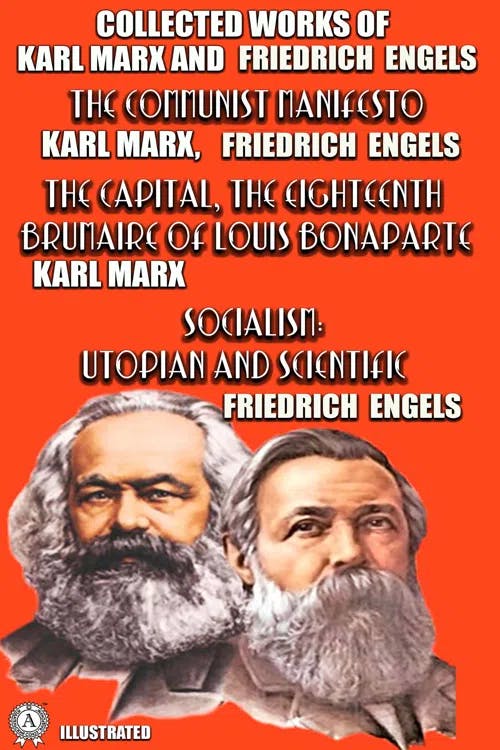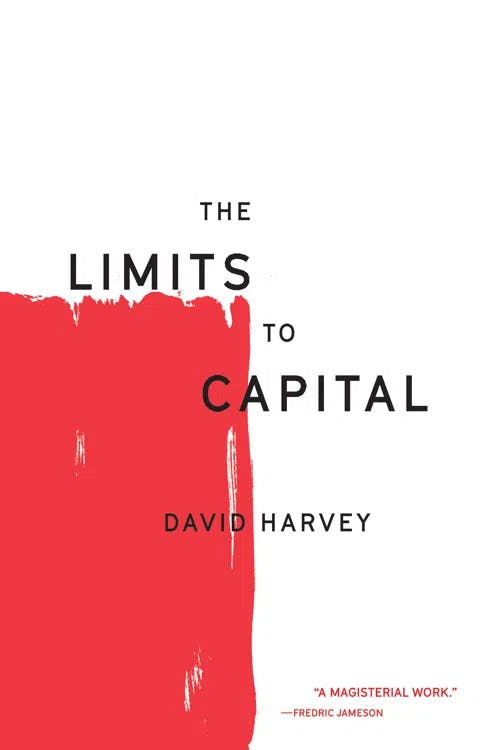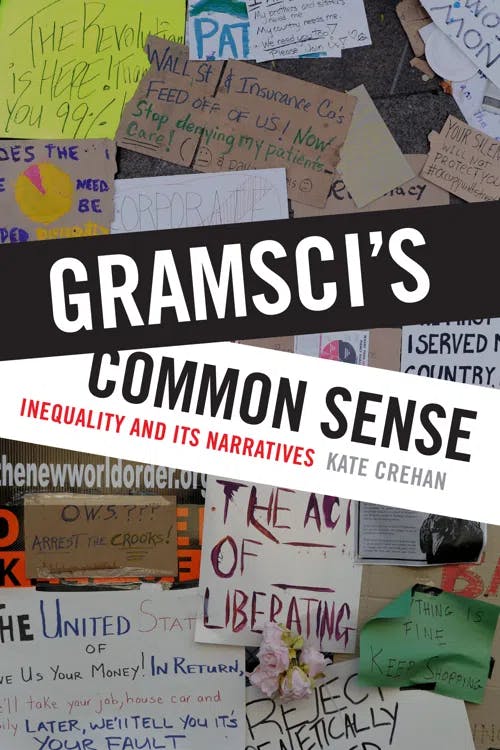Who are the Proletariat and the Bourgeoisie?
MA, Sociology (Freie Universität Berlin)
Date Published: 02.04.2024,
Last Updated: 05.04.2024
Share this article
Defining proletariat and bourgeoisie
Central concepts in Marxian theory, the proletariat and the bourgeoisie refer to the working and ruling classes under capitalism, respectively. Despite common notions of working-class culture, or the slang term “bougie” that often gets applied to those with luxurious lifestyles, whether one belongs to the proletariat or bourgeoisie is derived from something more concrete and specific: a person’s relation to the means of production (i.e., those structures that regulate the production and distribution of goods). Karl Marx argued that capitalist society is divided into the bourgeoisie who own the means of production and the proletarian masses must sell their labor for a wage. In practice, if you need to work at a job in order to pay for your life’s necessities, then you are a member of the proletariat. On the other hand, if your wealth comes from owning a corporation that hires employees, you are a member of the bourgeoisie.
In The Communist Manifesto, Marx and Friedrich Engels encapsulate the exploitative dynamic that manifests between the two classes in the following:
Modern industry has converted the little workshop of the patriarchal master into the great factory of the industrial capitalist. Masses of labourers, crowded into the factory, are organised like soldiers. As privates of the industrial army they are placed under the command of a perfect hierarchy of officers and sergeants. Not only are they slaves of the bourgeois class, and of the bourgeois State; they are daily and hourly enslaved by the machine, by the overlooker, and, above all, by the individual bourgeois manufacturer himself. (1847, [1914])
Karl Marx and Friedrich Engels
Modern industry has converted the little workshop of the patriarchal master into the great factory of the industrial capitalist. Masses of labourers, crowded into the factory, are organised like soldiers. As privates of the industrial army they are placed under the command of a perfect hierarchy of officers and sergeants. Not only are they slaves of the bourgeois class, and of the bourgeois State; they are daily and hourly enslaved by the machine, by the overlooker, and, above all, by the individual bourgeois manufacturer himself. (1847, [1914])
In this study guide, we will explore how society became divided into this oppressive dynamic in the first place, and examine the conflicts that persist between the proletariat and the bourgeoisie. We will conclude with some reflections on the significance of understanding these terms today when surveying our current social, political, and economic landscape.
The emergence of the proletariat and bourgeoisie
Early class stratification
The terms proletariat and bourgeoisie have existed for centuries, if not longer. The term "bourgeoisie" is derived from the word “borgeis,” which in Old French refers to a person who dwells in a city — alluding to this new class as being one distinct from both serfs and lords starting in the Late Middle Ages. The word "proletariat" dates back to the Roman Empire wherein the “proletarii” referred to propertyless citizens. Marx and Engels drew upon these historical concepts to arrive at their theory of class struggle under capitalism.
Based on their method of historical materialism, Marx and Engels closely analyzed the dynamics that propelled societies forward throughout the ages. From this work, they concluded that societies are fundamentally organized — and stratified — around their relations of production. In their own words,
In the earlier epochs of history, we find almost everywhere a complicated arrangement of society into various orders, a manifold gradation of social rank. In ancient Rome we have patricians, knights, plebeians, slaves; in the Middle Ages, feudal lords, vassals, guild masters, journeymen, apprentices, serfs; in almost all of these classes, again, subordinate gradations. (Marx and Engels, 1847, [1914])
Crucially, it is the tensions and antagonisms between these dominant and subordinate classes that serve as the engines of history. In the case of the capitalist society under which they were living, Marx and Engels argue that,
The modern bourgeois society that has sprouted from the ruins of feudal society has not done away with class antagonisms. It has but established new classes, new conditions of oppression, new forms of struggle in place of the old ones. Our epoch, the epoch of the bourgeoisie, possesses, however, this distinctive feature: it has simplified the class antagonisms. Society as a whole is more and more splitting up into two great hostile camps, into two great classes, directly facing each other: Bourgeoisie and Proletariat.
(1847, [1914])
Today, it may seem like a given that most of us must work for wages, while an increasingly concentrated and very rich class of CEOs make billions, but how did our modern bourgeois society emerge in the first place? In Marxian fashion, we must understand the dynamics of history — and conflict — that produced our current state of affairs.
Industrialization
The story of the modern bourgeoisie and proletariat begins in 16th and 17th-century Europe. This period saw the rise of a territorially fluid mercantilist class that gained vast quantities of wealth through imperialist conquest in the so-called New World. This class was becoming increasingly powerful and threatening to the sovereignty of the feudal lords — a landowning aristocracy who hitherto derived their wealth from tributes paid by serfs who lived on and farmed their lands. The wealth of the mercantilist class — and the landed gentry’s need to compete with it — had a major impact on the power structures and economy of Europe.
This helped give rise to modern statehood and governance practices, as feudal powers sought to legitimate their sovereignty beyond territory or divine right to rule. Not to mention, with so much wealth arriving on European shores through mercantilist exploits in places like South America, which brought in vast amounts of gold and silver, the old order was thrown into inflation and crisis — ultimately giving rise to early capitalism.
As Majia Holmer Nadesan argues in Governmentality, Biopower, and Everyday Life, the landed gentry was not able to fully subordinate this new class of wealthy merchants:
[…] sovereign control over the disposition of economic flows was far from complete as financial markets grew in complexity and importance, particularly through the formation of new institutional forms such as the joint-stock company. (2010)
Majia Holmer Nadesan
[…] sovereign control over the disposition of economic flows was far from complete as financial markets grew in complexity and importance, particularly through the formation of new institutional forms such as the joint-stock company. (2010)
In addition to stimulating the development of the private sector and market system, these new “economic flows” also gave rise to early industrial endeavors such as the construction of factories and the development of new technological innovations that would boost industrial production.
Moreover, the landed gentry began to sell off their landholdings to gain liquid assets in the form of government bonds. Thus, a new class of merchants, bankers, and entrepreneurs emerged which was increasingly rich in capital and known as the bourgeoisie. Largely residing in cities — as opposed to feudal estates — the bourgeoisie owned factories, had access to finance capital to invest, and amassed political power and influence within this new capitalist order that was beginning to solidify in the age of industrialization.
Primitive accumulation
Of course, there’s still one big missing piece of the puzzle in this story: The factories needed workers. In a process known as primitive accumulation, the proletariat was brought about by force, as peasants were violently dispossessed from their lands — and thus, their means of subsistence. As Marx describes it in Das Kapital,
[…] capital comes dripping from head to foot, from every pore, with blood and dirt. [...] Thus were the agricultural people, first forcibly expropriated from the soil, driven from their homes, turned into vagabonds, and then whipped, branded, tortured by laws grotesquely terrible, into the discipline necessary for the wage system. (in Collected Works of Karl Marx and Friedrich Engels, 1867, [2021])
Karl Marx and Friedrich Engels
[…] capital comes dripping from head to foot, from every pore, with blood and dirt. [...] Thus were the agricultural people, first forcibly expropriated from the soil, driven from their homes, turned into vagabonds, and then whipped, branded, tortured by laws grotesquely terrible, into the discipline necessary for the wage system. (in Collected Works of Karl Marx and Friedrich Engels, 1867, [2021])
Despite a period of vehement peasant revolts, common lands were enclosed into private property. Vagabondage and other ways of refusing to work under this new system were also criminalized. As a result, these peasants were corralled into cities in search of wage labor jobs. As such, they became the proletariat who, in the absence of owning capital, had only their labor to sell in order to survive.
Thus, out of these complex social, political, and economic transitions, the bourgeoisie and proletariat were born. Yet, Marx and Engels weren't content just to offer a descriptive account of history. In fact, they had something else in mind entirely. In the following sections, we’ll cover the implications — and call to action — associated with the development of these concepts.
Class conflict
The labor theory of value
As you might imagine from the above account, the dynamic between the bourgeoisie and the proletariat is not one of cooperation or mutual benefit. Rather, these classes are in conflict and their interests are at odds. Such is made evident when we examine another core element of Marxism: the labor theory of value. According to this theory, "the value of commodities was determined by the labor-time necessary for their production" (Michael Heinrich, An Introduction to the Three Volumes of Karl Marx's Capital, 2012).
This may seem rather innocuous at first glance, but its implications form the crux of the conflict between classes. Marx asserts that it is through workers’ labor that commodities are valued at more than the sum of their parts. He would ask, for instance, why a chair composed of wood ($50) and nails ($30) is valued on the market for $100, which is more than the cost of the wood and the nails. He argues that it is the labor that goes into the chair that accounts for the markup on price. Yet, this is not the main thrust or implication of the labor theory of value. Marx points out that even though the workers’ labor accounts for the additional valuation of the chair, much of that money doesn’t end up in their pockets. Instead, it makes their employers — the bourgeoisie — richer.
For Marx, this constitutes an exploitative relationship, where workers are not paid in full for the value they produce. Instead, the bourgeoisie who own and control the means of production, profit directly through the proletariat’s exploitation. Marx argues that this constitutes a conflict between classes because their interests are opposed. It’s in the workers’ interests to receive the highest proportion of compensation for the value they create, but it’s in the capitalists’ interests to keep as much of that profit for themselves. When one class achieves its objectives, the other loses and vice versa. As David Harvey describes it in The Limits to Capital,
The justification of the labour theory of value [...]lies in Marx’s discovery that ‘all history is the history of class struggle’, and that the labour theory of value must hold because it is the expression of the class relations of capitalism. (2018)
David Harvey
The justification of the labour theory of value [...]lies in Marx’s discovery that ‘all history is the history of class struggle’, and that the labour theory of value must hold because it is the expression of the class relations of capitalism. (2018)
And under capitalism, it’s the bourgeoisie that are winning in the class conflict by profiting off the exploitation of the proletariat. If you look around, you can see that it is the wealthy who not only own corporations and factories but also news outlets, the apartments where we live, and hold the majority of political offices. In fact, it isn’t even just the Marxists who hold this view, as the billionaire Warren Buffett famously said himself, "There’s class warfare, all right, but it’s my class, the rich class, that’s making war, and we’re winning" (Quoted in Andrew Sayer, Why We Can’t Afford the Rich, 2014).
Cultural hegemony and the bourgeoisie
While the bourgeoisie has much in common with capitalists, who own the means of production and directly employ workers, these groups are not entirely coterminous. The bourgeoisie can be understood as a broad group of capitalists. This includes factory owners and CEOs, but also other wealthy and powerful members of society that help to uphold the power of the capitalists in the realms of politics and culture. Examples include politicians, diplomats, media moguls, celebrities, socialites, real estate developers, big landlords, financiers, and so on. Together, the bourgeois class maintains dominance through cultural hegemony.
Cultural hegemony refers to how the ruling class exerts dominance over the masses through norms, values, media, culture, and institutions. As Kate Crehen describes it,
The narratives that become hegemonic are those that reflect the world as seen from the vantage point of the rulers rather than the ruled. Those that emerge from less privileged locations are forced to exist within the interstices of the dominant explanations; an ability to impose commonsense truths, which as-sume that existing power relations are the only ones possible, is a crucial dimension of any power regime. (Gramsci’s Common Sense, 2016)
Kate Crehen
The narratives that become hegemonic are those that reflect the world as seen from the vantage point of the rulers rather than the ruled. Those that emerge from less privileged locations are forced to exist within the interstices of the dominant explanations; an ability to impose commonsense truths, which as-sume that existing power relations are the only ones possible, is a crucial dimension of any power regime. (Gramsci’s Common Sense, 2016)
There are countless examples of how the bourgeoisie influence culture in their image and in accordance with narratives that suit their interests. This can be seen in how news outlets shape narratives around economic inequality in ways that mystify the class exploitation we discussed in the previous section.
(For more on how the bourgeoisie maintains cultural and ideological dominance over the proletariat, check out our study guide on Antonio Gramsci’s base-superstructure model.)
Proletarian struggle: socialist perspectives
Of course, despite the dominance of the bourgeoisie in economics, politics, and culture there have been many instances of proletariat class consciousness pushing back and even overriding the powers of the ruling classes under capitalism. Marx and Engels saw their analysis of classed society under capitalism as more than a mere intellectual exercise — it was meant to serve as an impetus for the working classes to overthrow the social order that exploited them. This is most famously exemplified in The Communist Manifesto, which contained this exact call to action for a revolution under the banner of communism:
The Communists disdain to conceal their views and aims. They openly declare that their ends can be attained only by the forcible overthrow of all existing social conditions. Let the ruling classes tremble at a Communistic revolution. The proletarians have nothing to lose but their chains. They have a world to win. WORKING MEN OF ALL COUNTRIES, UNITE! (1847, [1914])
The Communist Manifesto, in turn, has inspired socialist revolutions around the world, perhaps most notably in the Russian Revolution of 1917, which overthrew the Czarist class and ushered in the Soviet Union. (See our study guide on permanent revolution for more examples of how Marxist thought inspired socialist transformations around the world.)
Yet, even in cases where full-blown revolutions didn’t take place, socialism — drawing from the class consciousness propagated in Marxist theory — has helped workers to tap into their powers for collective bargaining, striking, boycotting, and more. These tools have been pivotal in ending child labor, instating the 8-hour working day, bringing about weekends, and much more. In fact, these strategies — stemming from worker unity through class consciousness — continue to be successful today. In fact, according to Pew Research Center, 2023 saw some of the most significant strike actions in recent decades — from the Screen Actors Guild in Hollywood to the United Auto Workers For Marxists. Therefore, understanding the class relations between the bourgeois ruling class and the proletariat serves as the basis for collective organization toward a more egalitarian future.
The bourgeoisie and proletariat today
The concepts of bourgeoisie and proletariat, originating from Marxian theory of class struggle, remain relevant in contemporary society — even in light of significant social and economic transformations. Today, we live in a globalized world characterized by widening income inequality, political crisis, and ongoing struggles for social justice. The bourgeoisie — comprising the capitalist class who own and control the means of production — continue to wield formidable influence in shaping our economic and political realities, while accumulating wealth and power at the expense of the proletariat.
In addition, dynamics of outright class conflict persist in various forms across different sectors and regions worldwide. While traditional industrial settings may have evolved, new forms of exploitation and alienation have emerged through outsourcing and the gig economy, where precarious labor conditions and lack of job security disproportionately affect the working class. On a global scale, there has also been a mounting roster of successful strikes and other actions in healthcare, agriculture, transportation, and more.
What’s more, younger generations consistently report holding sympathies for socialist views in polls in countries like the United States — despite being at the helm of free market capitalism. Thus, the proletariat and bourgeoisie still serve as useful analytical tools for those seeking economic and social justice.
Further reading on Perlego
Capital in the Twenty-First Century (2017) by Thomas Piketty
Marx's Proletariat: The Making of a Myth (2015) by David Lovell
The Petite Bourgeoisie in Europe 1780-1914 (2021) by Geoffrey Crossick and Heinz-Gerhard Haupt
Why Marx Was Right (2011) by Terry Eagleton
Workers' Inquiry and Global Class Struggle (2020) by Robert Ovetz
What are the proletariat and bourgeoisie in simple terms?
What is an example of the proletariat and bourgeoisie?
Why are the proletariat and bourgeoisie in conflict?
Who are scholars associated with the concepts of the proletariat and bourgeoisie?
Bibliography
Crehan, K. (2016) Gramsci's Common Sense: Inequality and Its Narratives. Duke University Press Books. Available at: https://www.perlego.com/book/1466844/gramscis-common-sense-inequality-and-its-narratives
Desilver, D. (2024) “2023 saw some of the biggest, hardest-fought labor disputes in recent decades.” Pew Research Center. https://www.pewresearch.org/short-reads/2024/01/04/2023-saw-some-of-the-biggest-hardest-fought-labor-disputes-in-recent-decades/
Harvey, D. (2018) The Limits to Capital. Verso. Available at: https://www.perlego.com/book/827855/the-limits-to-capital
Heinrich, M. (2012) An Introduction to the Three Volumes of Karl Marx's Capital. Monthly Review Press. Available at: https://www.perlego.com/book/719795/an-introduction-to-the-three-volumes-of-karl-marxs-capital
Marx, K. (2021) Collected Works of Karl Marx and Friedrich Engels. Illustrated. Available at:
Marx, K. and Engels F. (2014) The Communist Manifesto. HarperTorch. Available at: https://www.perlego.com/book/602671/the-communist-manifesto-pdf
Nadesan, M.H. (2010) Governmentality, Biopower, and Everyday Life. Routledge. Available at: https://www.perlego.com/book/714588/governmentality-biopower-and-everyday-life
Sayer, A. (2014) Why We Can’t Afford the Rich. Policy Press. Available at: https://www.perlego.com/book/3532973/why-we-cant-afford-the-rich
MA, Sociology (Freie Universität Berlin)
Lily Cichanowicz has a master's degree in Sociology from Freie Universität Berlin and a dual bachelor's degree from Cornell University in Sociology and International Development. Her research interests include political economy, labor, and social movements. Her master's thesis focused on the labor shortages in the food service industry following the Covid-19 pandemic.





